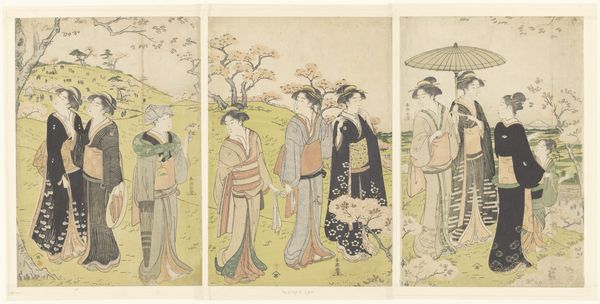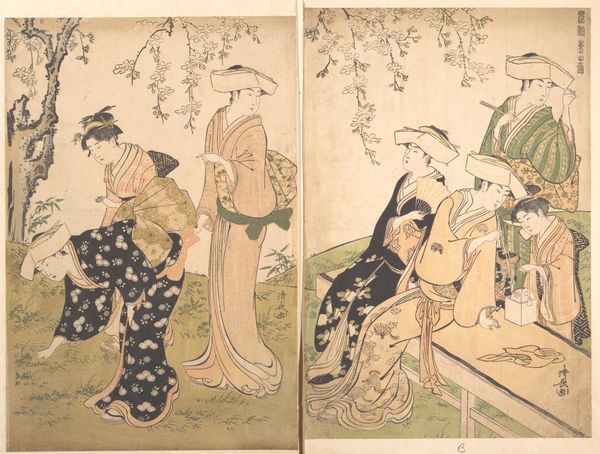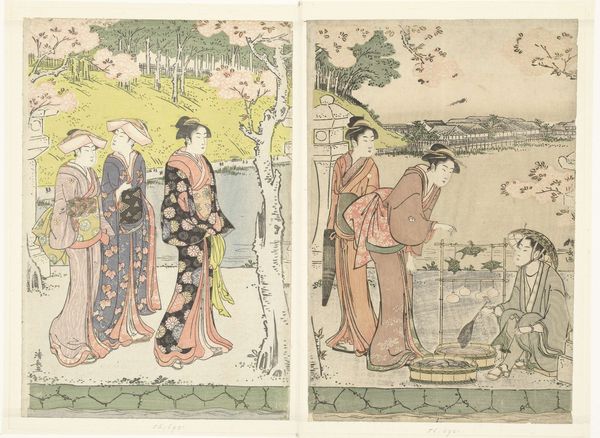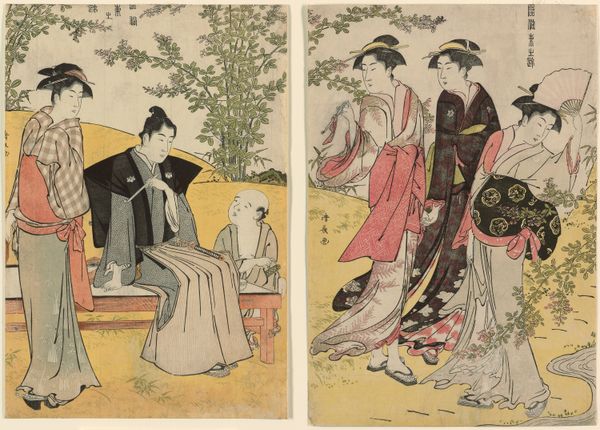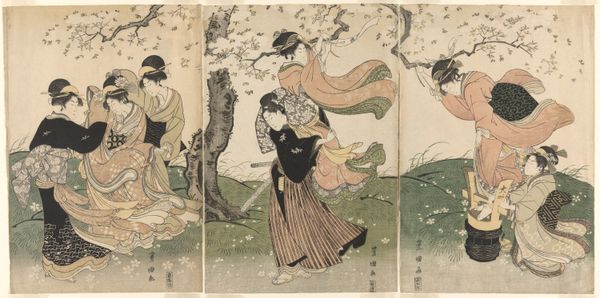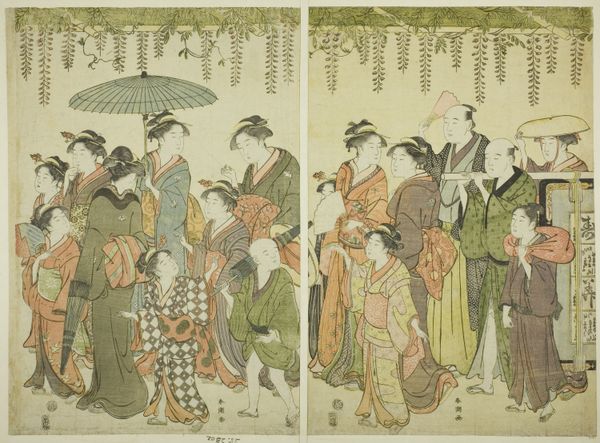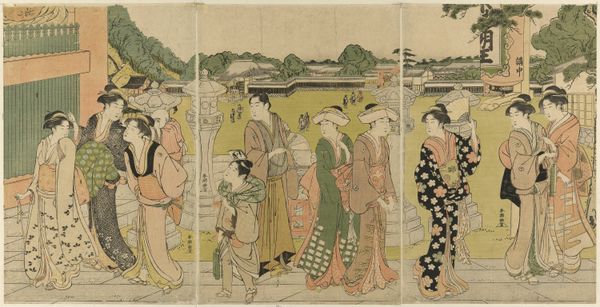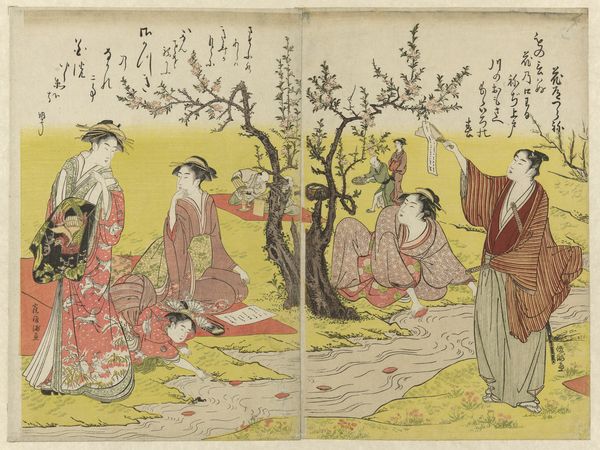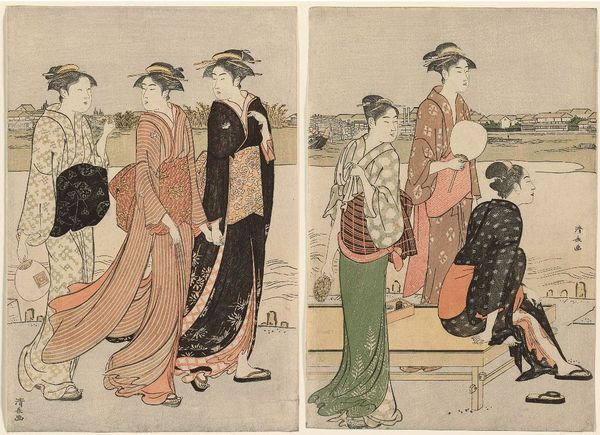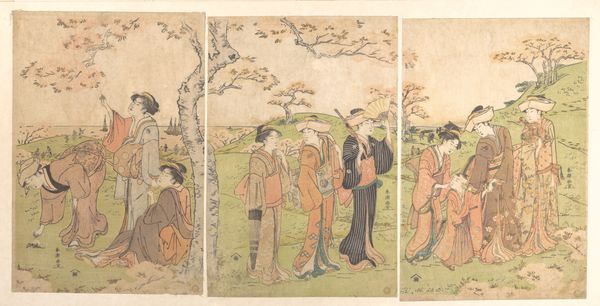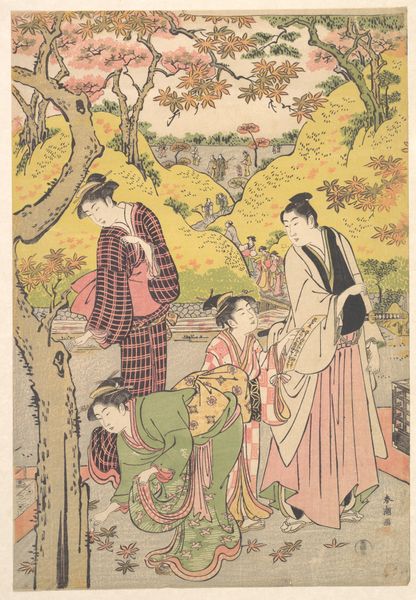
Young Ladies Viewing Cherry–blossoms at Asukayama 1742 - 1815
0:00
0:00
Dimensions: a: H. 14 5/8 in. (37.1 cm); W. 9 11/16 in. (24.6 cm) b: H. 14 5/8 in. (37.1 cm); W. 9 11/16 in. (24.6 cm) c: H. 14 5/8 in. (37.1 cm); W. 9 15/16 in. (25.2 cm)
Copyright: Public Domain
Curator: This triptych, a woodblock print, is entitled "Young Ladies Viewing Cherry-blossoms at Asukayama." It's by Torii Kiyonaga and dates from the late 18th or early 19th century. What do you see when you first look at it? Editor: I'm immediately struck by the subdued color palette, a sort of pastel wash, and the organization of the figures. The composition creates a sense of rhythmic movement across the three panels, as though we are seeing the same group from varied points in time and space. Curator: Absolutely. These prints were designed for a broad urban audience. The cherry blossom viewing—hanami—is a potent symbol of spring, renewal, but also the fleeting nature of beauty and life. These weren't grand portraits of individuals, but archetypes of fashionable women enjoying a seasonal pleasure. Editor: The flat planes of color and strong outlines create an almost abstract feel, don’t you think? It prefigures modernism in some unexpected ways, with its attention to surface and line over depth. What can we deduce from their costumes, would you say? Curator: Indeed. Their kimono patterns denote social standing and taste. Note the intricate textile designs—each tells a story about the wearer's family history and their appreciation of artisanal crafts. The careful arrangement of hairpins and sashes carries codified social information too. It would tell the informed viewer exactly who they were. These kinds of group scenes immortalize idealized citizens, offering future generations glimpses into an aspired-to elegance of living and being in nature. Editor: Looking at the use of space and color I begin to wonder if Kiyonaga deliberately created a dream-like impression, using gentle tonal variations and open composition to evoke the feeling of spring itself. It's as though the print embodies a kind of atmospheric impression rather than strict realism. Curator: Kiyonaga's work offers layers to consider. This print certainly isn't just a landscape or a record. These carefully posed figures offer more. In a way they show the synthesis between individual aesthetic choice and culturally ingrained values, even within a leisure activity. Editor: Yes. Ultimately, what’s compelling here for me is the blend of abstraction and figuration—how this historical genre scene resonates with later formal preoccupations. Curator: Precisely, and that intersection can inform us so deeply on how we’ve culturally evolved to perceive images today.
Comments
No comments
Be the first to comment and join the conversation on the ultimate creative platform.
